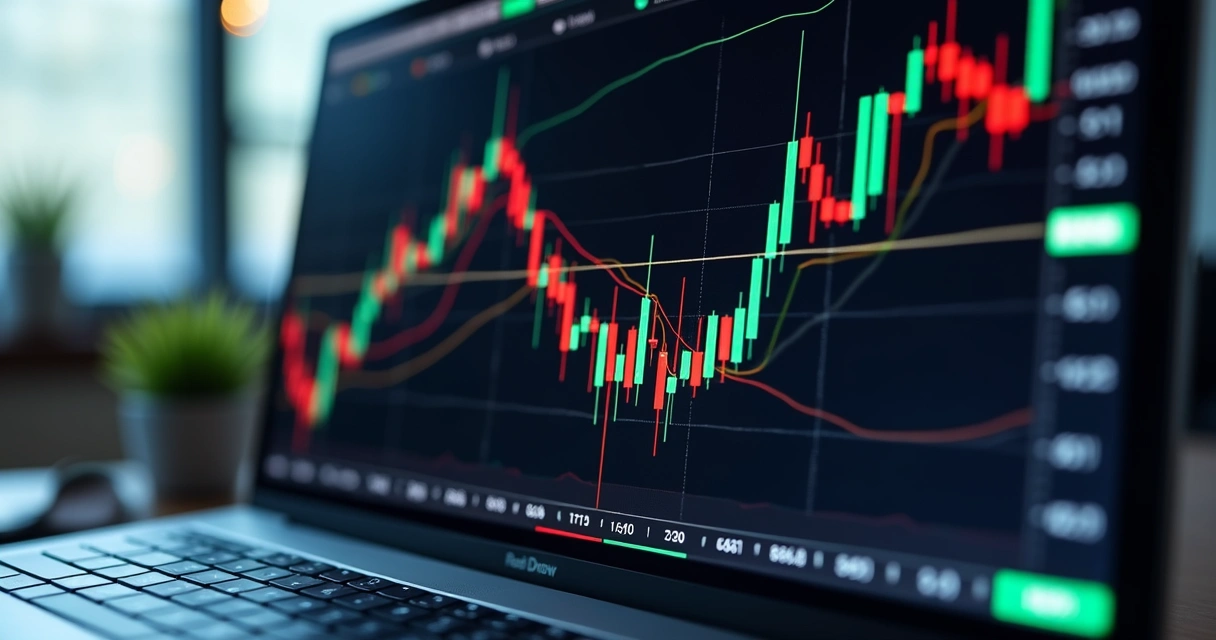Some traders search for quick wins. Others prefer waiting. Both camps look to the markets for opportunity. Yet there is a method, bordering on the obsessive, where traders enter and exit positions at high speed, aiming for gains that might seem tiny but multiply over time. That method is called scalping—a word with sharp edges and a story that is all its own.
Understanding the meaning of ‘scalping’ in finance
It is easy to stumble into confusion with the word itself. Traditionally, ‘scalping’ refers to practices in other contexts, often not related to finance—a reminder that words carry history. In the world of tickets, for example, it means reselling at inflated prices. In darker times, it once meant something far from trading. Yet in financial markets, scalping has no such negative connotation. Here, it stands for a legitimate speculative strategy.
Scalping in this setting describes a style of day trading. Practitioners of this approach do not hold positions for very long. Instead, they buy and sell rapidly, sometimes in seconds, usually never more than a few minutes. Their aim is simple—capture several tiny moves in price. If done well, these sums can become quite significant.
Small profits, again and again.
The core of scalping: fast, frequent trades
Imagine a trader watching the one-minute chart. Candlesticks shift quickly, every tick is a potential entry. Each trade may last only moments. The main difference between this style and other methods: the time spent in the market.
Rapid-fire execution is at the heart of this strategy. Enter, grab a few points, exit. Do it again, and again. Unlike swing traders, who hold for days, or positional traders, who may ride a trend for weeks, these market participants look for minor price changes that happen fast.
 This approach has found favor among new and experienced traders alike. At Institutional Trading Academy, many participants explore short-term techniques, including the high-activity world of this strategy, as a way to gain experience and test their discipline under strict conditions.
This approach has found favor among new and experienced traders alike. At Institutional Trading Academy, many participants explore short-term techniques, including the high-activity world of this strategy, as a way to gain experience and test their discipline under strict conditions.
How does the process work?
The core behavior is repeated action. Enter a position, wait for a very slight price movement, then close it. Perhaps the profit goal is just a few cents per share, or a similar fraction in another market. Some market participants may take thirty or more trades per day.
- Analyze the price action—ideally on lower timeframes (1, 2, or 5 minutes).
- Spot a small opportunity—an uptick, a quick pattern, maybe a single candle reversal.
- Enter rapidly—usually with pre-set order sizes.
- Close quickly at a modest profit, or cut losses.
Unlike longer-term trades, each position is held for only moments, sometimes just seconds.
Patience wears a stopwatch.
The challenge, of course, is that the price may not move as expected—or may do so in a split second. That is when discipline becomes not just helpful but essential. There are times, when the trader must act faster than comfort allows.
Why do traders choose this method?
There is an appeal to the method. Quick feedback. Frequent decision points. The sense that each moment is a test. It is not for everyone. For some, such rapid tempo is exhausting, or even stressful. Others view each trade as a puzzle, solved over and over.
The lure is the sheer possibility. Many small gains can add up, if repeated with skill and care. A trader might reason that ten successful trades of $0.10 each can be more manageable than waiting for one trade to hit $1.00. The compounding effect draws many to this technique.
The vital role of liquidity and volatility
Trades need two things to complete: a buyer and a seller. Or more simply, enough participants on both sides. Liquidity is the lifeblood of rapid trading. It ensures orders are filled quickly and with little slippage.
Volatility, meanwhile, is the pulse. Without small movements, opportunities vanish. But if volatility spikes too much, risk balloons, and the method’s logic can break down in the chaos.
Studies such as those discussed in the U.S. Securities and Exchange Commission’s analysis of day trading underline that high-volume, liquid markets are most compatible with short-term strategies. They document the link between swift order execution and potential profitability, but also reveal the risks posed by unexpected volatility or low liquidity, where even small amounts traded can move prices.
Characteristics of suitable markets
- High daily volume (millions of shares/contracts traded).
- Tight spreads between bid and ask prices.
- Consistent price action, not erratic jumps.
- Low transaction costs relative to the profit goals per trade.
Nasdaq-listed stocks, high-volume forex pairs, major equity indexes—all are popular. Traders operating in these environments find it easier to enter and exit trades without meaningful market impact.
Main tools and key indicators
Speed is useful, but information is power. The tools required for this approach go far beyond the “buy” and “sell” buttons. Institutional Trading Academy introduces its students to a range of setups—hardware, software, and analytic techniques—needed to react quickly and think clearly.
 1. Moving averages
1. Moving averages
A favorite, these lines smooth out noise. Short-term versions, like the 5-period or 9-period exponential moving average (EMA), track tiny moves and help spot quick reversals. The crossing of EMAs can signal momentum shifts. Many use these crossovers as triggers to enter and exit fast trades.
2. Relative strength index (RSI)
RSI measures how quickly a price is moving in one direction. While commonly used for longer swings, on one-minute or five-minute charts, it can flag overbought or oversold moments ripe for a quick counter move.
3. MACD (moving average convergence divergence)
This combines two moving averages and their difference. On lower timeframes, it can signal momentum changes, though there may be a delay compared to the pure price action.
4. Level 2 and order book data
An advanced tool, not always present in every trading platform, this visualizes buy/sell orders sitting in the market. It lets the trader see liquidity “walls” and gauge when a quick move may stall.
5. Hotkeys and fast execution platforms
Speed matters. Many rely on customizable keyboard shortcuts, or “hotkeys,” to enter and exit trades without mouse delays. Even a second saved can make a difference in certain moments.
Some prefer a stripped-down setup, convinced that adding too many indicators creates hesitation—the ultimate enemy of any rapid strategy.
The impact of costs: commissions and fees
For strategies where every cent counts, costs are a constant threat. Each trade has a price—sometimes hidden, sometimes clear. As noted in the U.S. Securities and Exchange Commission’s research, frequent traders face expenses from commissions (typical costs can range from $15 to $25 per trade) and monthly fees (often $50 to $675). These quickly add up.
If the average profit per trade is only a few cents, commissions can wipe out gains before they even reach the account balance.
The house always gets its cut.
Even more troubling, the U.S. Senate hearing on day trading highlights estimates where traders need to make annual returns of up to 56% just to cover expenses, based on fee structures observed in some firms. This reality means that, for many, losses are more common than big wins.
Not surprisingly, the Senate’s analysis points out the temptation for traders to take risks like gamblers—chasing daily profit goals, sometimes to their own detriment. Risk management is not optional; it is all that stands between the trader and ruin.
Leverage in short-term trading
The math, for many participants, does not seem to add up at first. If aiming for pennies per trade, the notional amount must be high. That’s why leverage—a borrowed boost to buying power—is so common in this context.
Yet increased leverage also increases risk. Losses multiply at the same pace as gains. More than one beginner has found that a few blown trades, with leverage, can erase weeks of careful effort.
Leverage cuts both ways.
Institutional Trading Academy addresses this in its programs. Traders learn not just to size positions properly, but to measure risk per trade and never risk the entire account. Such lessons may seem boring to some, but the alternative is a hard rule: those who skip risk control do not last.
Risk management and discipline: non-negotiables
No discussion of this approach is complete without a closer look at discipline. Rules matter more than preferences. No trader, no matter how skilled, can “feel” their way through a hundred lightning trades and always come out ahead.
 Stop-loss orders
Stop-loss orders
The most direct way to limit damage. Each trade should have a preset point, where if price moves the wrong way, the position is closed immediately. Many set stop-losses just beyond the usual price movement observed on their chosen timeframe.
Defined position sizes
Avoid risking too much on any single trade. If the aim is to win small and often, one large loss can undo many wins. Those who stick to fixed, small position sizes weather the setbacks better.
Clear exit rules
Not every trade will be a winner—and sometimes, the best decision is to abandon a stale position for a minor loss or tiny gain, then move on.
A second of hesitation can cost an hour of profit.
Ongoing self-monitoring
Success is not just about skill, but self-reflection. Keeping track of trades, reviewing statistics, noticing patterns—these habits distinguish those who last from those who disappear. Regular self-assessment, as encouraged by Institutional Trading Academy, is a mark of a mature operator.
Does scalping fit every personality?
No. Some thrive in the fast lane, others get overwhelmed. This trading method is frequently compared to other styles for this reason.
- Position trading: positions held for weeks or months, focusing on bigger moves but less frequent action.
- Swing trading: positions last for several days, seeking larger profits from intermediate price moves.
- Intraday trading (non-scalping): some hold positions for several hours per day, aiming for moderate-size profits.
- High-speed scalping: trades last seconds to minutes, high-frequency, aiming for minimal profit per trade.
A study referenced in the SEC’s findings on day trader demographics noted that over half of traders engaging in such strategies are under 40, well-educated, and with above-average incomes and net worth. Yet, as shown, losses are common. A routine that suits one might frustrate or exhaust another. Some admit, ‘I lose focus after twenty trades.’ Others claim they feel most alive watching each tick.
Know your own pace.
Building a clear plan before starting
It is an error to jump in without a map. Institutional Trading Academy’s lessons put this front and center. Each trader should write down clear rules, numeric limits, and daily targets that match their risk tolerance, then stick to them. Planning in this strategy plays a larger role than most suspect.
- Define the exact conditions to enter a trade (indicator crosses, price levels, volume changes, etc.).
- Pre-select risk per trade and daily loss limits.
- Schedule breaks—fatigue leads to mistakes.
- Re-assess results at the end of each session.
- Use trading journals or logs to track trades and adapt over time.
Common mistakes and how to avoid them
Mistakes are part of learning, but some recur enough to mention. Institutional Trading Academy reports that beginners—especially those using simulated funded accounts available at ITA’s evaluation programs—make the same errors in the early stages:
- Chasing after losses (“revenge trading”).
- Skipping stop-losses in hopes of a turnaround.
- Getting distracted—losing track of open positions.
- Ignoring trade costs, believing the ‘next win’ will make up the gap.
- Letting a single bad trade spiral.
There is no secret formula. The best protection is usually patience, careful planning, and the humility to accept when the market will not deliver.
 Simulated accounts and practice environments
Simulated accounts and practice environments
Institutional Trading Academy favors practice. Beginners are urged to test their hand with simulated accounts before putting real funds at risk. The value is not just in avoiding loss, but in building confidence and routine.
The ITA’s structure, described at ITA’s about page, allows traders to work with both virtual and funded accounts, with support, feedback, and community discussion. This removes much of the early fear and permits growth with limited downside.
No trader masters rapid execution in a single afternoon.
What does a typical session look like?
Curiosity often strikes at this point. What is the workday of a rapid-action trader? A day might unfold like this:
- Arrive early—set up charts, double-check technology, review overnight news.
- Open practice trades to “warm up” and calibrate reactions.
- Track the opening hour, when liquidity is highest—place first trades based on tested setups.
- Take regular breaks to reset focus (every 90 minutes if possible).
- Log trades and review performance at lunch or midday halt.
- Aim to stop after meeting a reasonable profit or loss limit—avoid over-trading.
- Finish by reviewing the day, noting mistakes and successful patterns for future sessions.
 The end result? Sometimes, a string of tiny wins. Other times, a quick loss and a hard lesson. But for those willing to face the pace, there is learning to be found in every session.
The end result? Sometimes, a string of tiny wins. Other times, a quick loss and a hard lesson. But for those willing to face the pace, there is learning to be found in every session.
Long-term growth through discipline and education
The technique is often linked to fast profits, but real growth in this field comes with time. Education matters. Community support, honest feedback, and ongoing self-assessment are just as important. Many find that reading lessons, such as those offered at ITA’s educational blog, offers both strategy breakdowns and reminders of the need for caution.
No trader, even the gifted, is immune from error. In the long-term, the best results often belong to those with patience, structured plans, and an appetite for continuous learning.
Where to learn more and test yourself
There are endless resources in this area; however, choosing a focused and disciplined environment is a significant boost. Institutional Trading Academy maintains a frequently updated FAQ for new and experienced traders at the ITA FAQ and welcomes all backgrounds. The path from practice to mastery can be long, but steady progress is both possible and rewarding.
For those who seek deeper insights or tailored programs, the main Institutional Trading Academy blog provides extensive guidance, insights into common trader questions, and details on different account types, including those with simulated funding for traders keen to practice without risk.
Conclusion: Is scalping the right path?
This approach is fast, intense, and sometimes stressful. Yet, for those with the right rhythm, and a deep commitment to self-assessment, it can be satisfying—whether as a stepping stone or a permanent home for one’s trading ambitions.
If you want to experience the thrill of quick decisions and learn to manage risk, consider building your skills within a supportive and structured environment. Institutional Trading Academy welcomes both novices and veterans to test, learn, and potentially gain real-world trading experience without risking large amounts of their own capital. Be honest with yourself, set your rules, and start your journey toward faster, smarter trading. Check out ITA’s resources and programs to find a challenge that matches your profile, and see what you can achieve.
Frequently asked questions
What is scalping in day trading?
Scalping in day trading refers to a strategy where traders open and close positions within seconds or minutes, aiming to profit from tiny price fluctuations. This approach is based on making a large number of trades throughout the day, focusing on taking small profits from each one rather than holding a position for a longer move.
How does a scalping strategy work?
A scalping strategy relies on identifying quick, small opportunities in the market. Traders use technical indicators like moving averages, RSI, or MACD on short timeframes and enter trades with defined rules. They focus on rapid execution, preset stop-losses, and small position sizes, closing out each trade quickly to lock in minor gains while minimizing prolonged exposure to risk.
Is scalping profitable for beginners?
It can be profitable but is often difficult for beginners. According to research summarized in regulatory hearings, most short-term traders struggle to break even due to costs and mistakes, with a high percentage incurring losses. Consistency and discipline are required, and beginners are advised to start with simulation accounts like those offered through Institutional Trading Academy before risking real money.
What are the best markets for scalping?
The best markets for this style of trading are those with high liquidity, tight spreads, and active price movement. Major stock exchanges, popular forex currency pairs, equity index futures, and select highly liquid cryptocurrencies are common choices. These markets enable quick entries and exits with reliable order fills.
How much money do I need to scalp?
The minimum required varies depending on the market, broker, and local regulations. Because the profit per trade is very small, a larger account or use of leverage is usually needed to make the activity worthwhile. However, beginners are urged to start with practice (demo) accounts and only use money they can afford to lose, keeping in mind that transaction costs can eat into profits very quickly, as noted in several market studies. Many programs, such as those at Institutional Trading Academy, allow new traders to learn with minimal or simulated capital.

